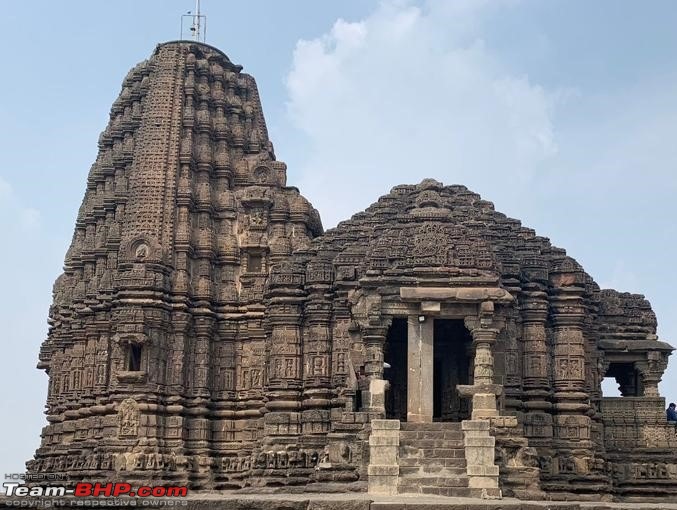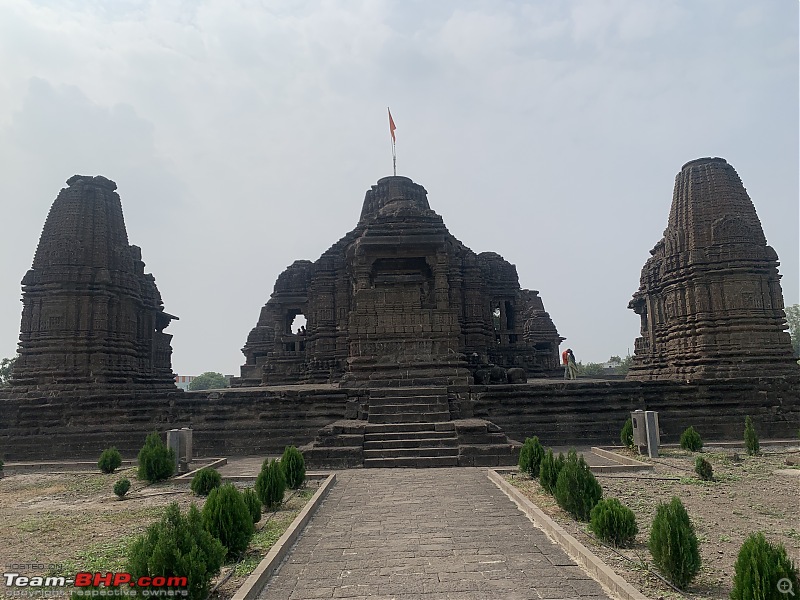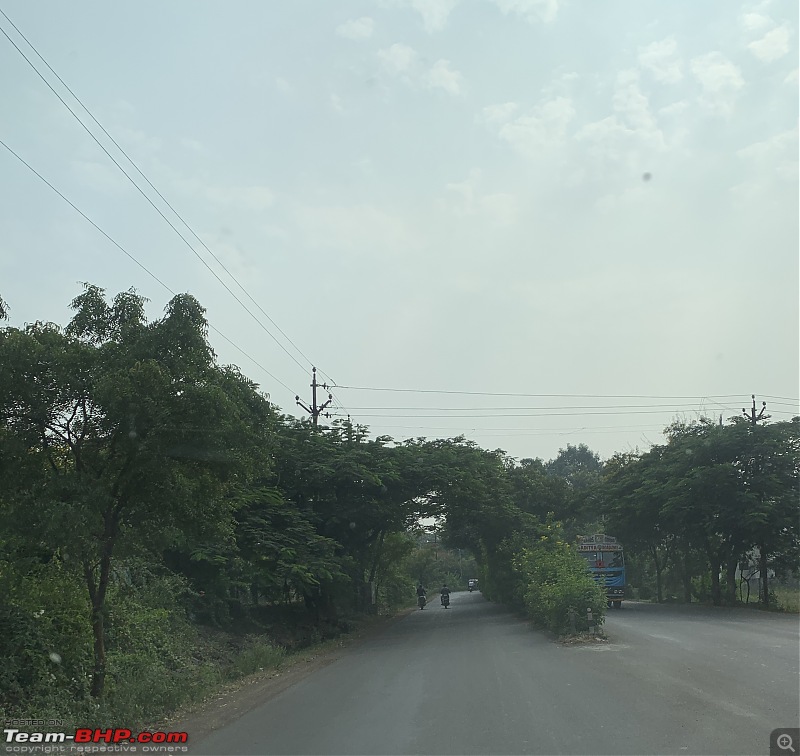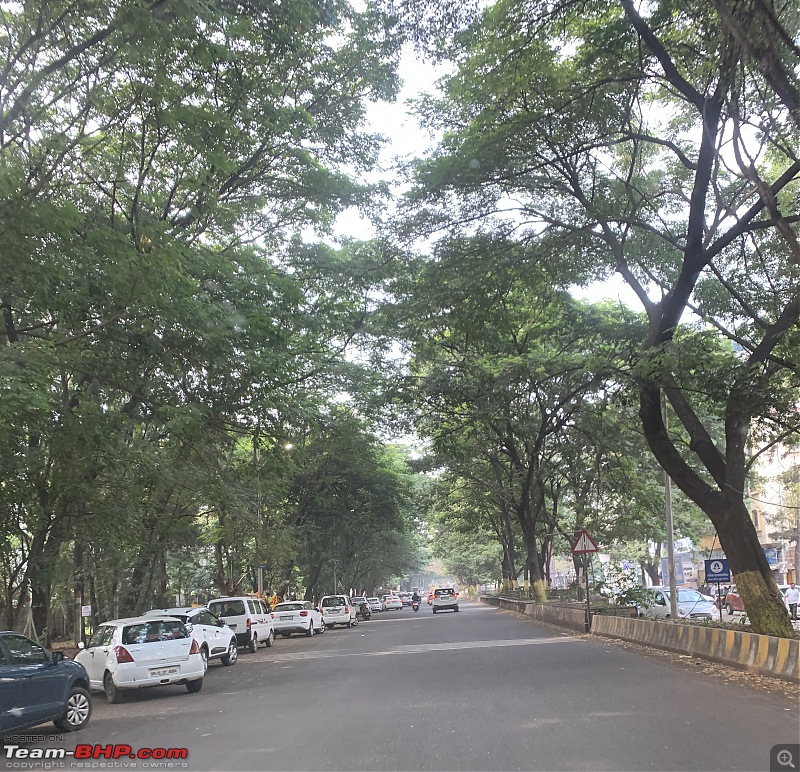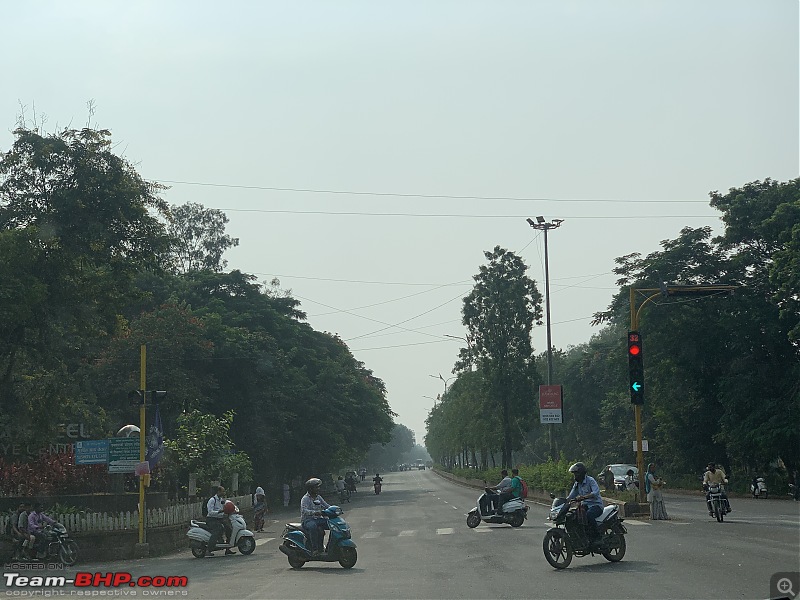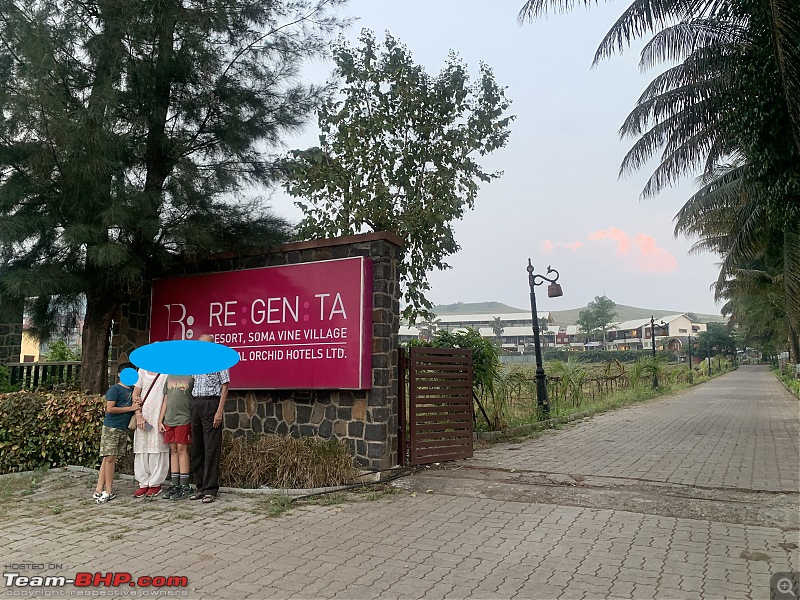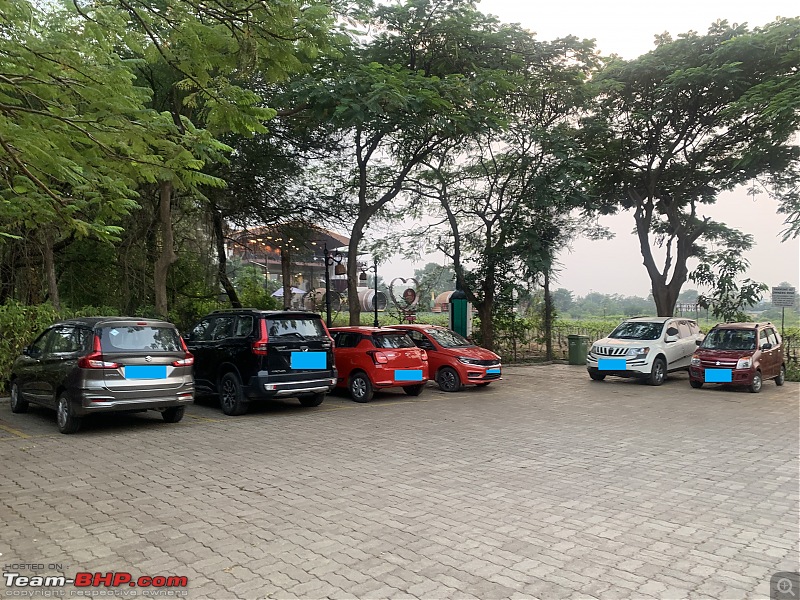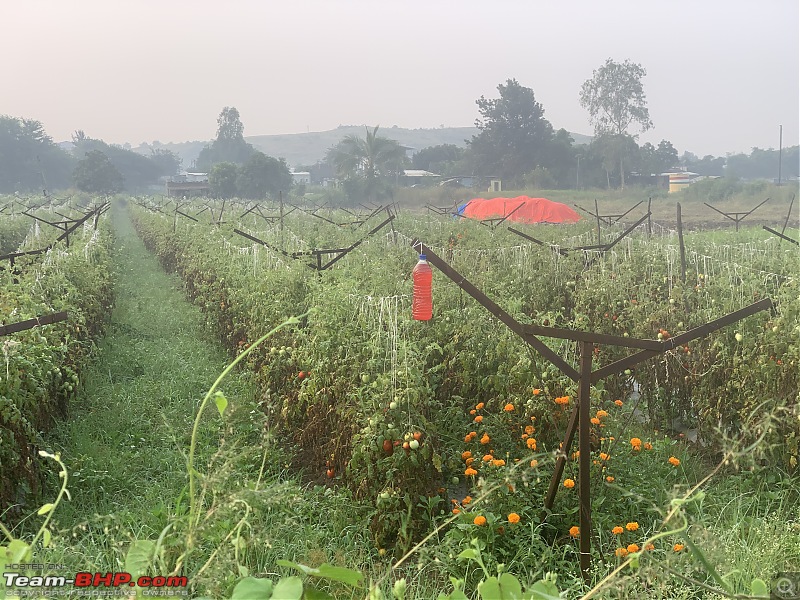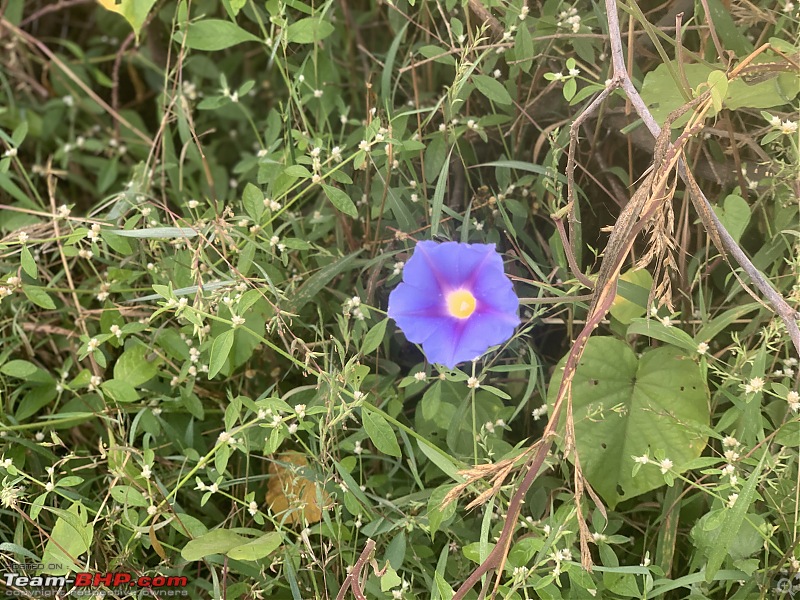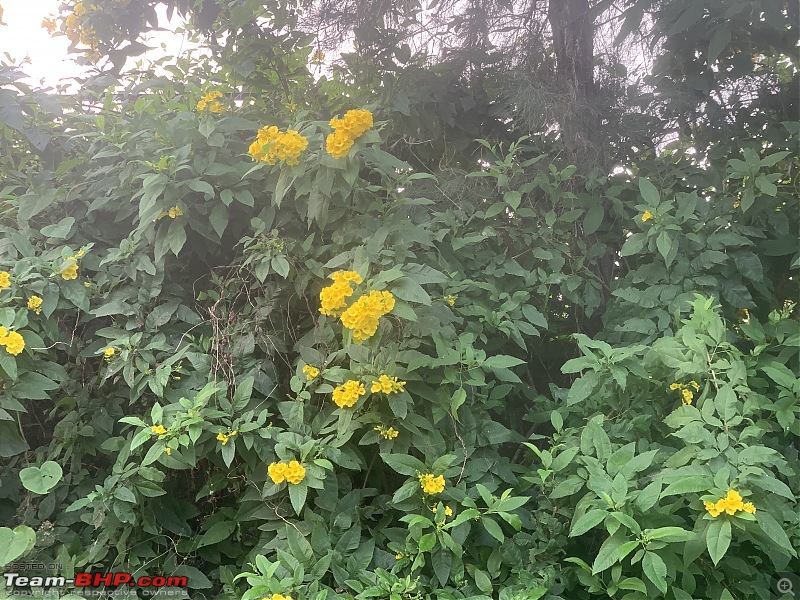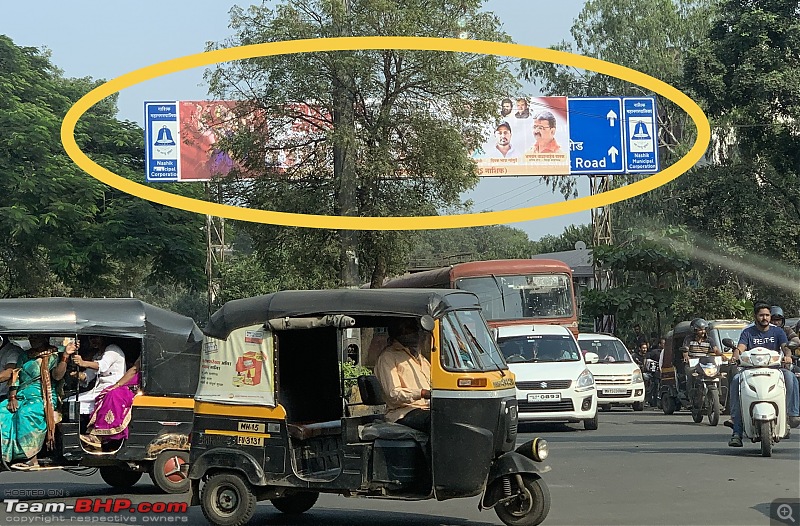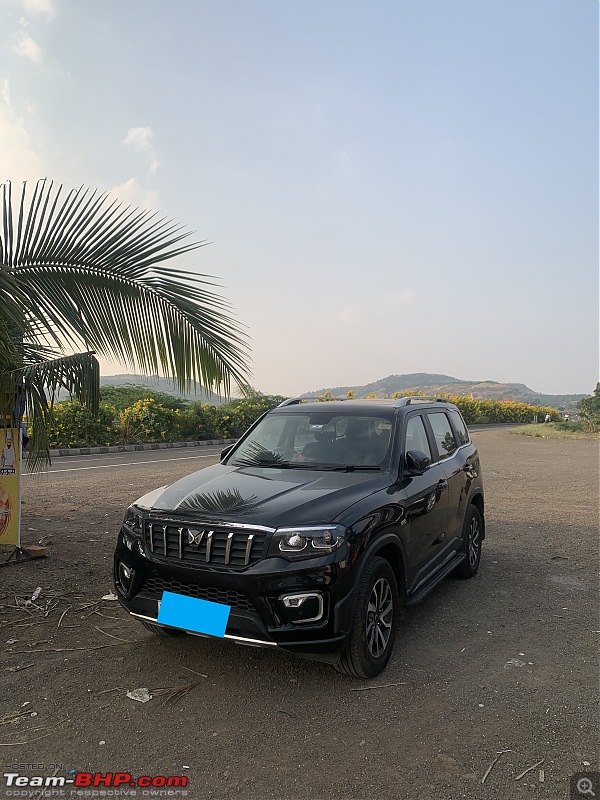| |||||||
| Search Forums |
| Advanced Search |
| Go to Page... |
 |
| Search this Thread |  7,527 views |
| | #1 |
| BHPian Join Date: Oct 2020 Location: Poone, Mumbay
Posts: 560
Thanked: 2,285 Times
| Visit to Gondeshwar Temple & Nashik Winery When I was younger, always had this desire to travel the world, see other countries and experience other cultures. As time passed and my scalp went from Amavasya to Poornima, the wisdom (budget) and delights of spending time exploring India became more apparent. We have so much to see and experience: natural beauty, history, religion and culture, arts and crafts, wide open expressways to winding country roads, world class cuisine available at all price points. We just don’t appreciate it, and do a dirt poor job of promoting and maintaining our tourist destinations. One of these examples is described in this travelogue. It is the Gondeshwar Mandir, which is a Shiva Temple from the 11th-12th Century, in the town of Sinnar, 50km south of Nashik. There are a few brief descriptions of the place on earlier travelogues, but I have tried to include more details of the journey and about the temple itself, although information is hard to come by. Although (because??) it is maintained by the Archeological Survey of India (ASI), there is not much information provided at the temple either. Since we stayed overnight in Nashik after the temple visit, a brief description of the resort we stayed in is also included. The Journey: The traveling party consisted of the kids (Shelby & Cobra), parents, sister and her 2 canine bosses D & T. We headed out of Pune towards Nashik on an October Saturday morning in 2 cars: Vader aka the ScorpioN and the sis in her red Tiago. There was heavy traffic in the Chakan/Bhosari area, in addition to terrible roads. Once past the urban jungle, we got onto the nice divided portion of the Pune-Nashik-Dhule NH60, and it was a smooth drive for the most part on the concretized highway, barring a few patches that were still under construction. 1 break for a top-up breakfast and chai was all we needed. After entering Sinnar, and following the barely visible sign to the temple, we were at the site by 1:20pm. 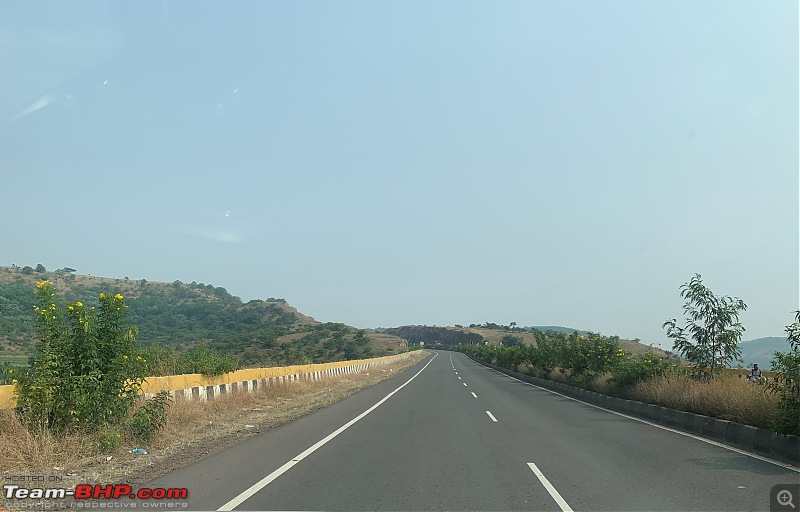 Life is a Highway 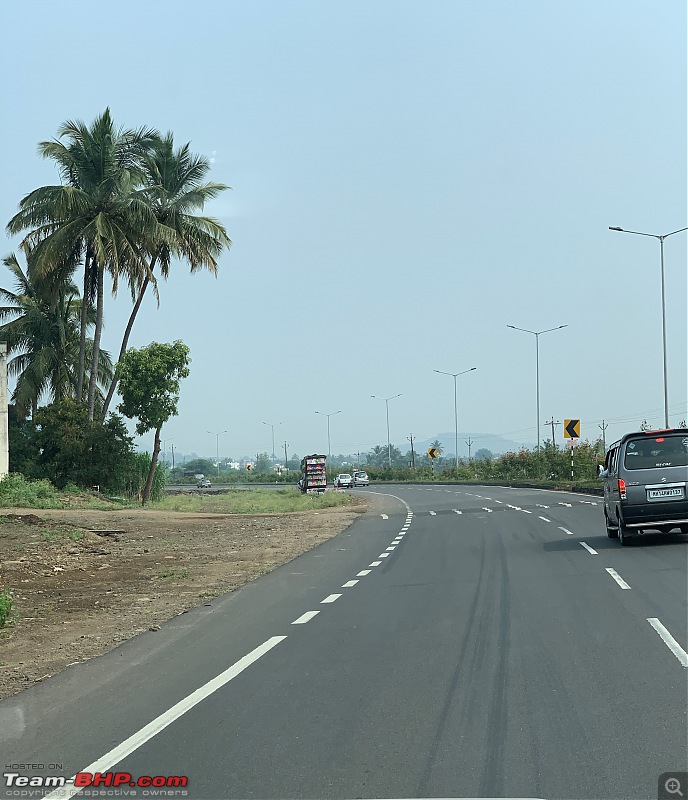 Gentle curves 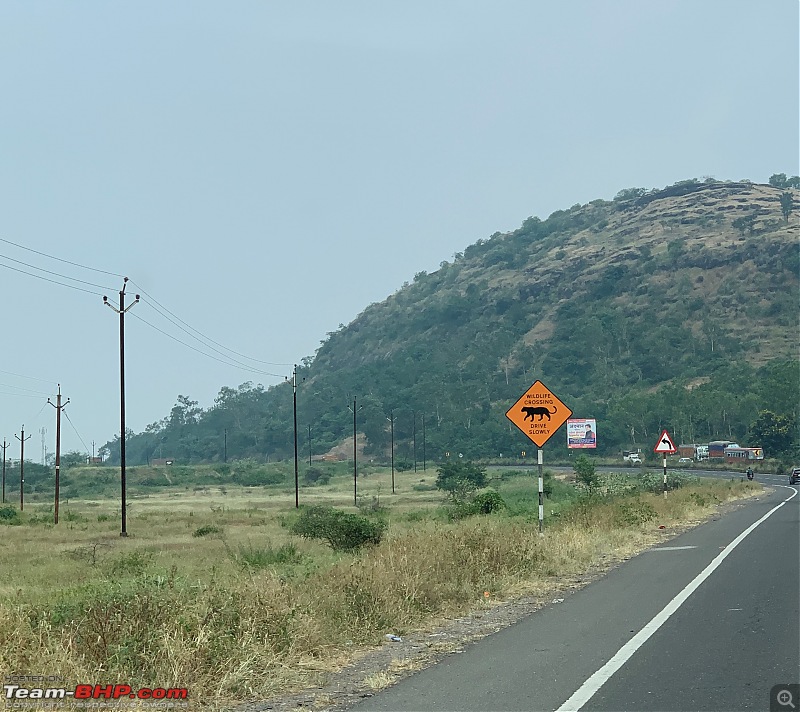 Only wildlife we saw was bikes and some cars driving in the wrong direction 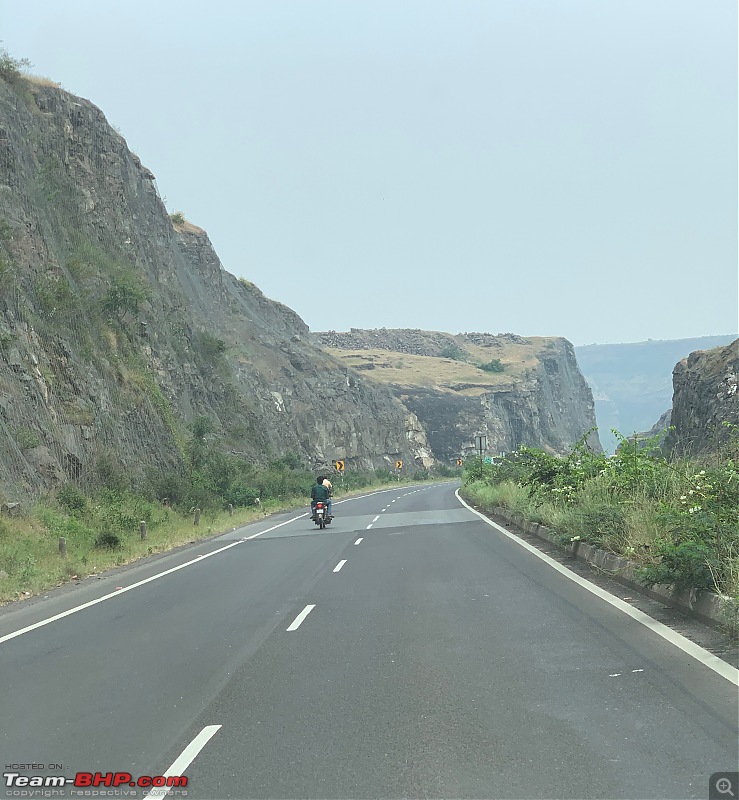 Road cut through the hill 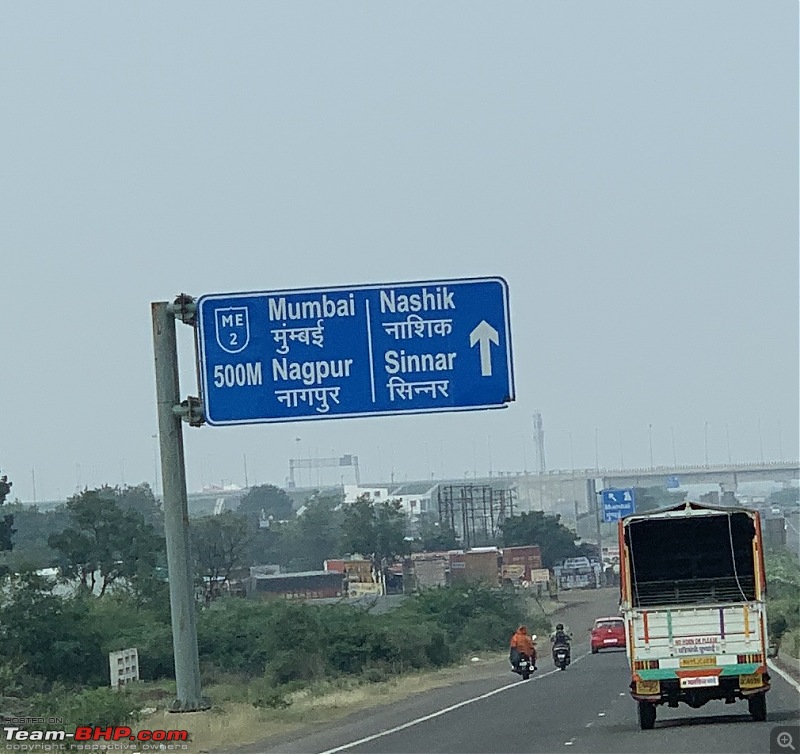 Appropriate that the Temple is in a town named "Sinnar"? 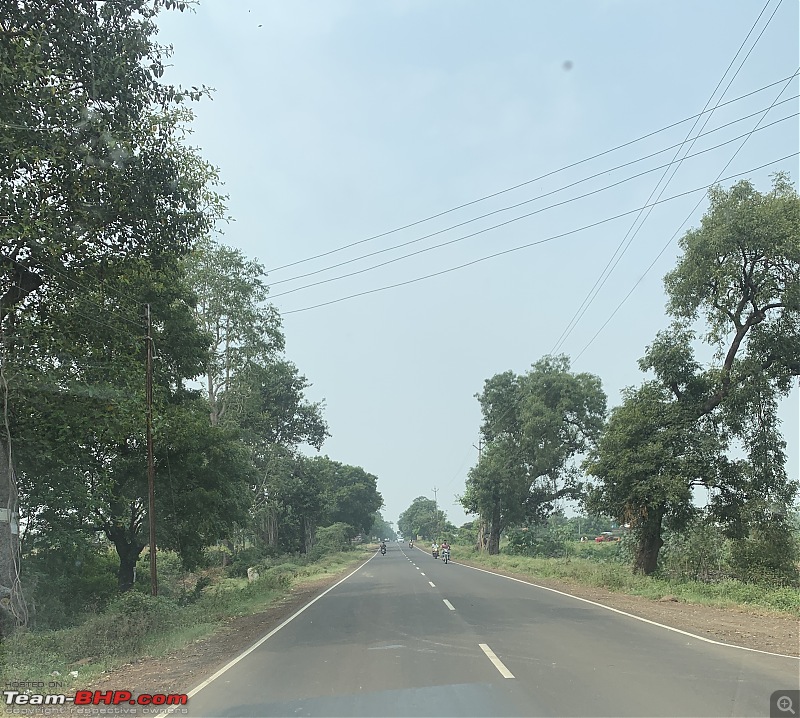 Road to Sinnar 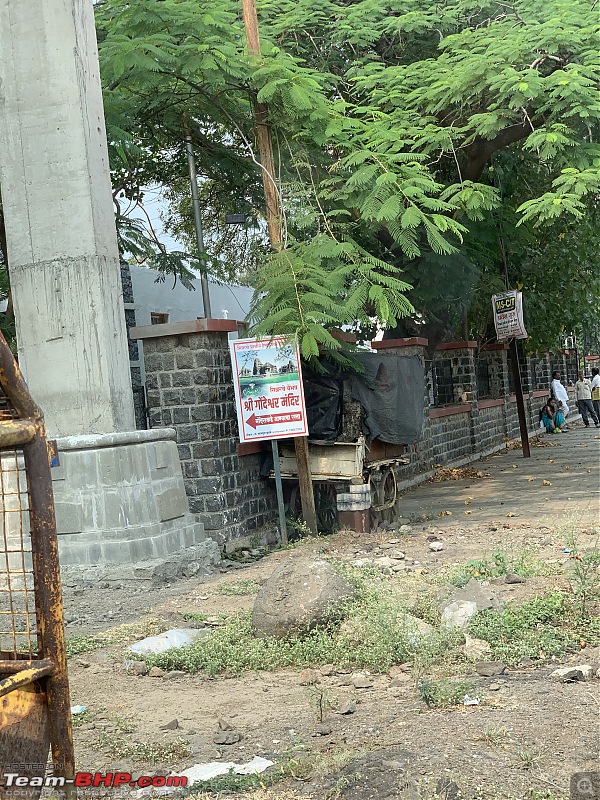 The large and prominent sign to the Temple </sarc> 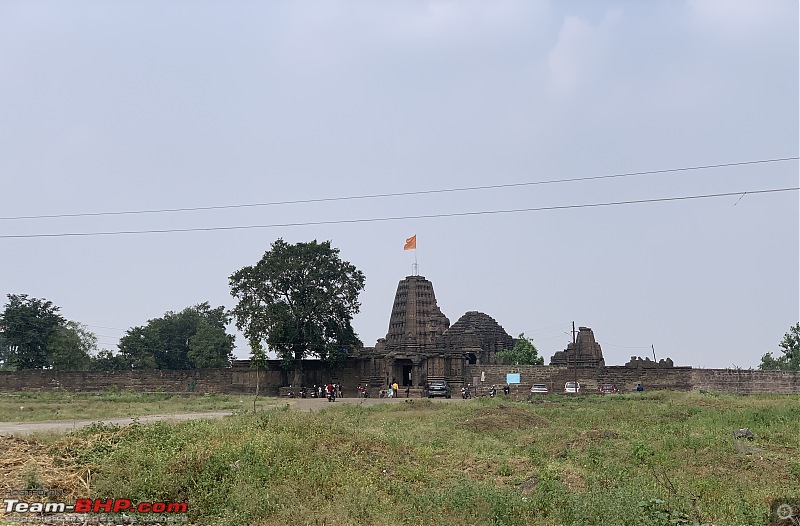 First view of the beautiful Temple The Temple: All the below information barring pictures is sourced from Wikipedia and the Encyclopedia Britannica. The latter in particular was a revelation in terms of the sheer detail provided. Wiki Britannica (Bhumija)  Boys with their grandparents  Boys with their aunt and canine cousins 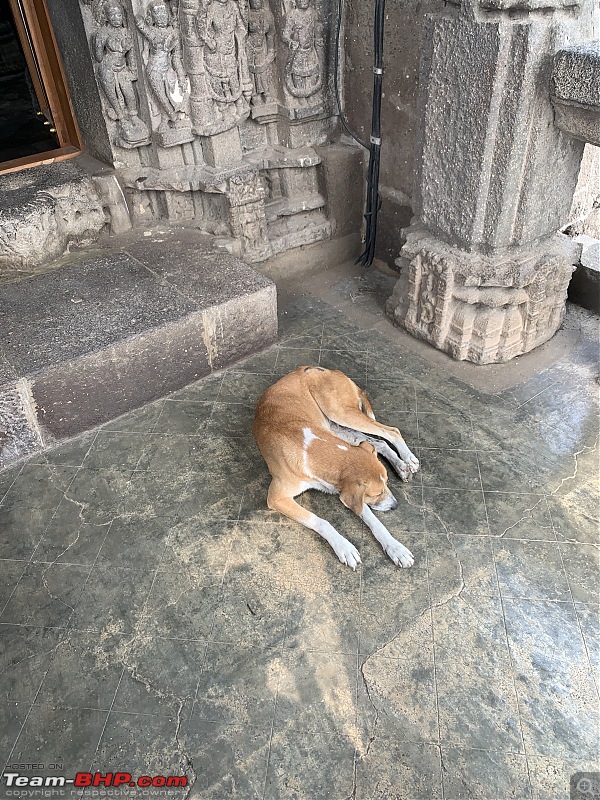 All are welcome here  This is all the information provided The only official information provided is the above signage posted by the ASI, and no additional details are provided about which deity is who, or any background about the construction, history and various tribulations the temple has clearly suffered. There is a solitary ASI guard posted, whose main job seems to be stopping visitors from climbing the temple walls for their never ending selfies. As can be seen from the pictures, Gondeshwar is a magnificent structure, sitting on a large stone platform and built out of black basalt, in the North Indian Nagara architectural style. The temple was built in the 11th-12th century, and constructed using the Hemadpanthi method, which does not use any cement or mortar, but the precise placement of individual elements to achieve balance and structural integrity. The fact that this temple has lasted for a thousand years after being built like this, while in 21st century India we have roads developing potholes within 1 month, bridges collapsing while under construction and entire towns getting flooded after a heavy shower is something to think about. The temple is laid out in the Panchayatana plan, with the central main shrine dedicated to Shiva and a Nandi pavilion facing it, and four subsidiary temples for Surya, Vishnu, Parvati and Ganesha. The Ganesha statue is easy to identify, and I hazarded that the one with the right leg folded up is Vishnu. Parvati was identified as the more feminine-looking one of the remaining two, which left Suryadev as the last one. 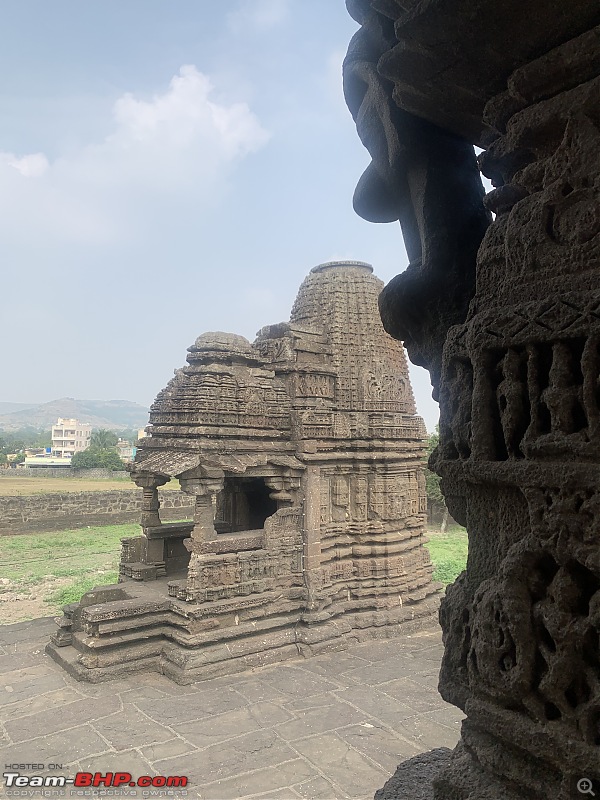 One of the subsidiary temples 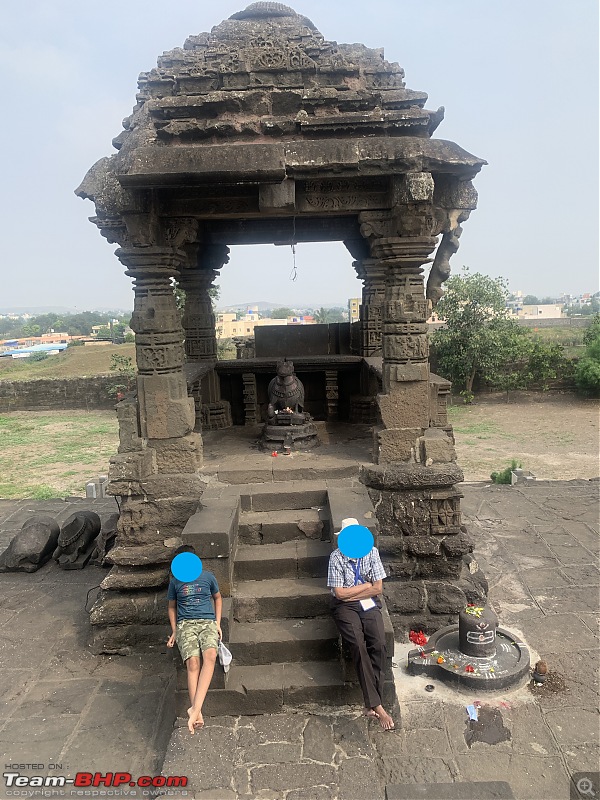 The Nandi Temple 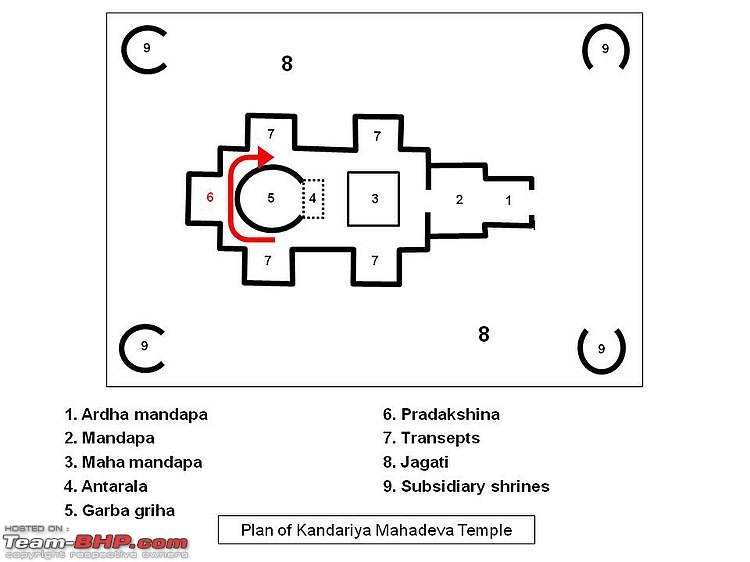 Example of Panchayatna layout (source: Wiki) 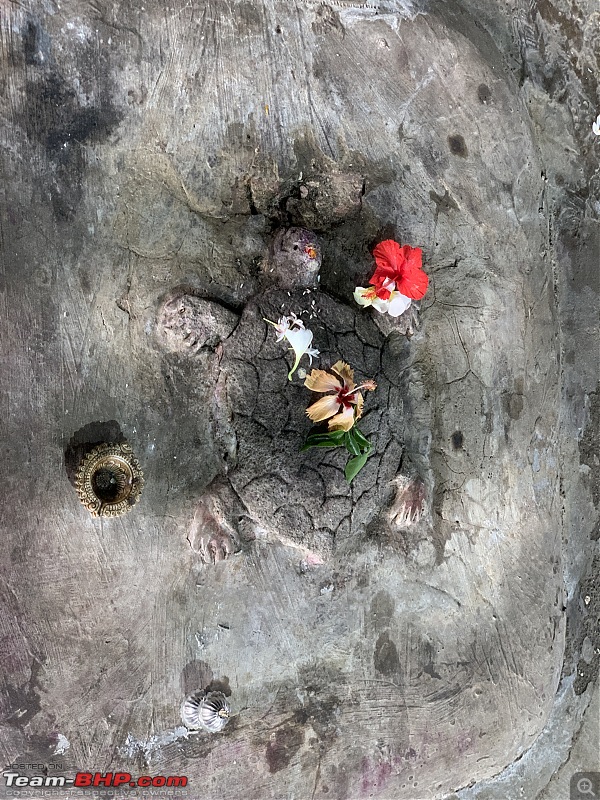 The ubiquitous tortoise just after entering the main shrine. It is supposed to be a message for us to withdraw our senses from the physical world and focus on the divine  Beautifully carved ceiling. How did the artisans balance themselves while doing such intricate work? 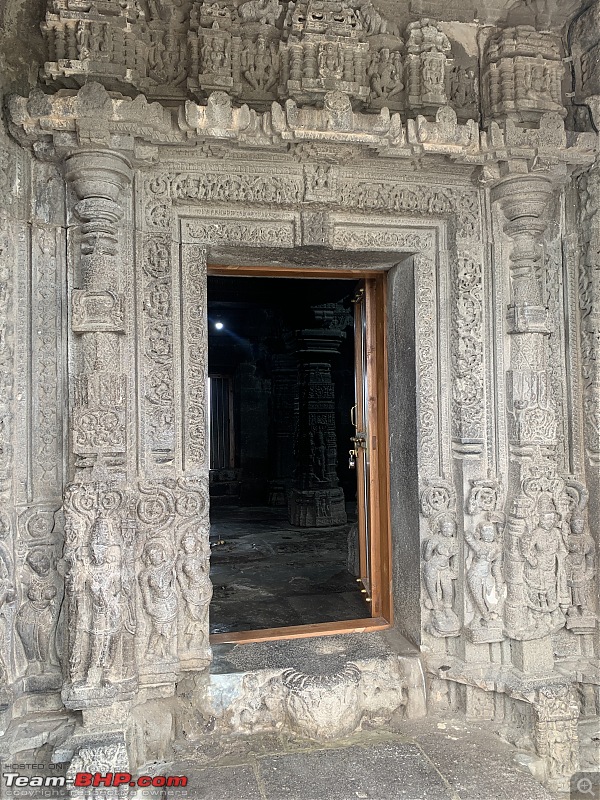 Entrance to the main shrine 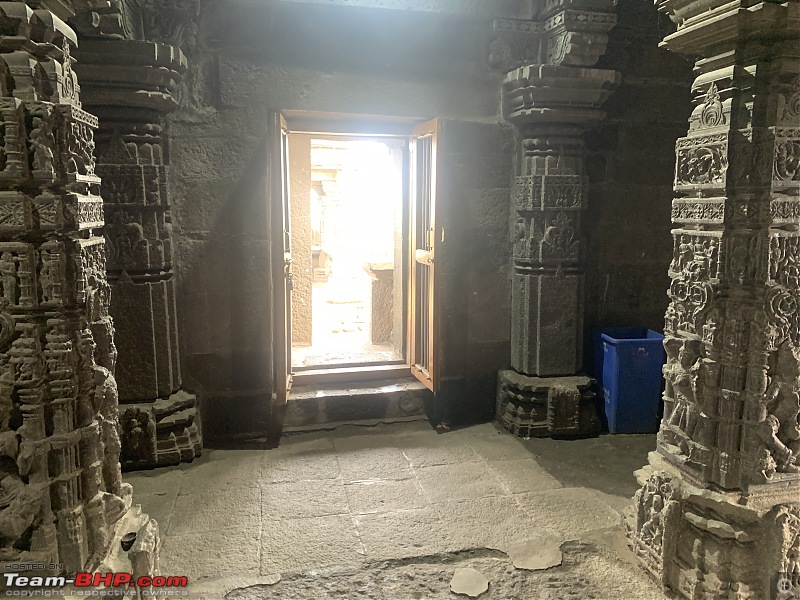  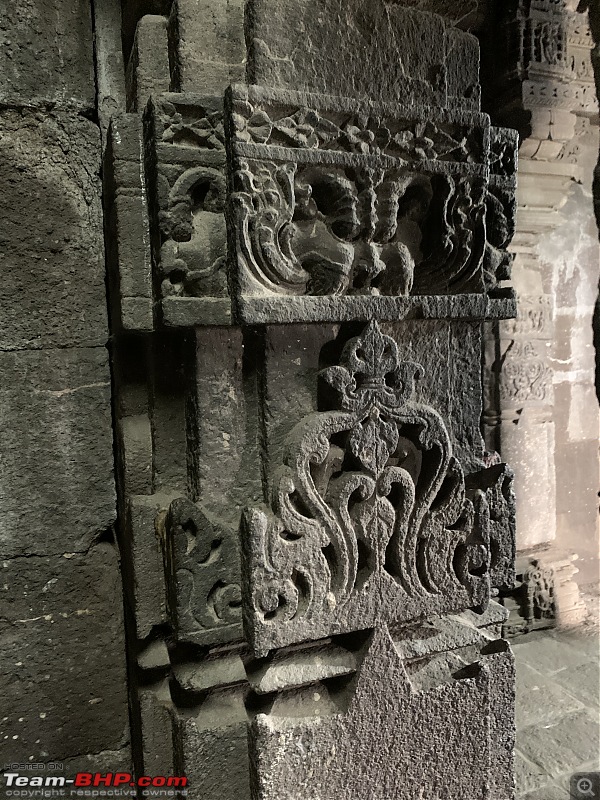 Beautifully carved pillars in the main shrine 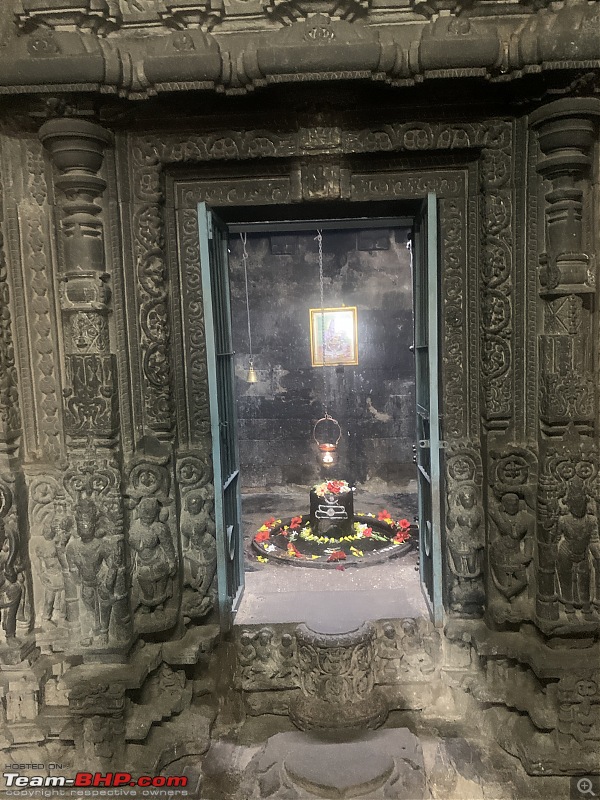 Shiva Lingam from outside 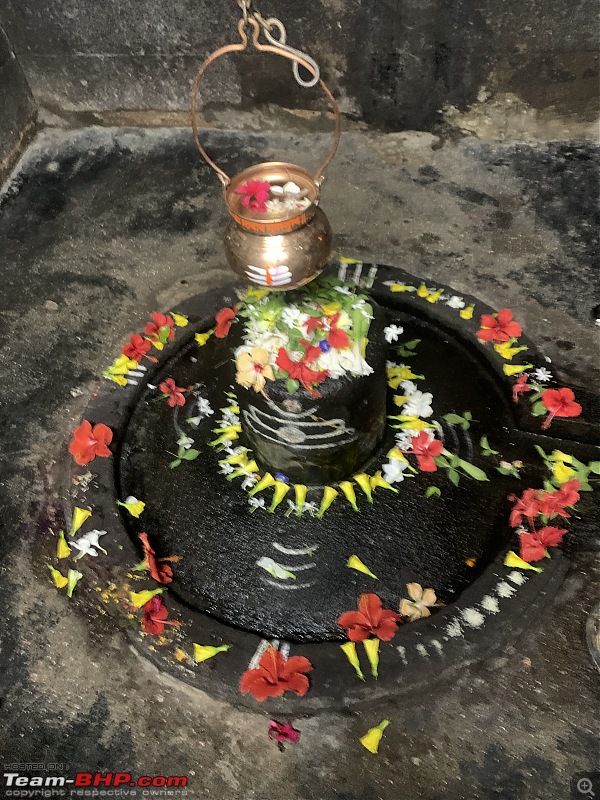 Close up 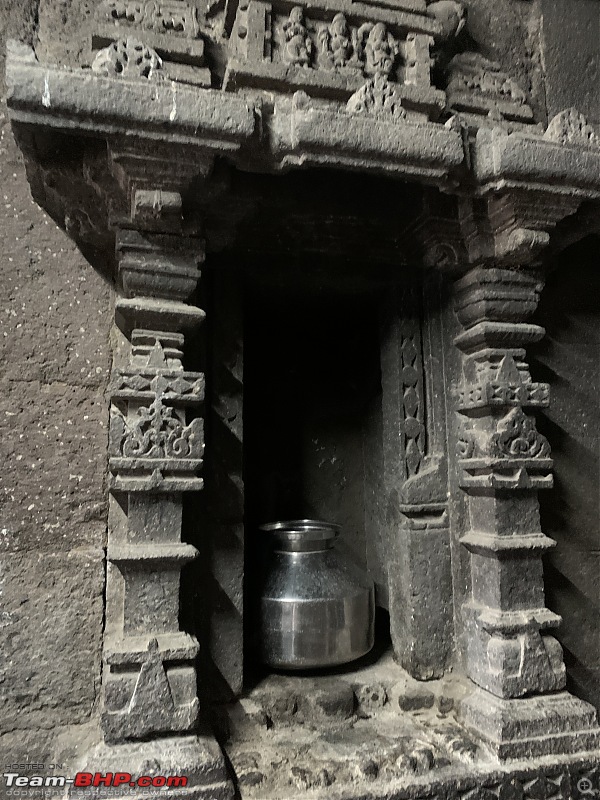 Old and New 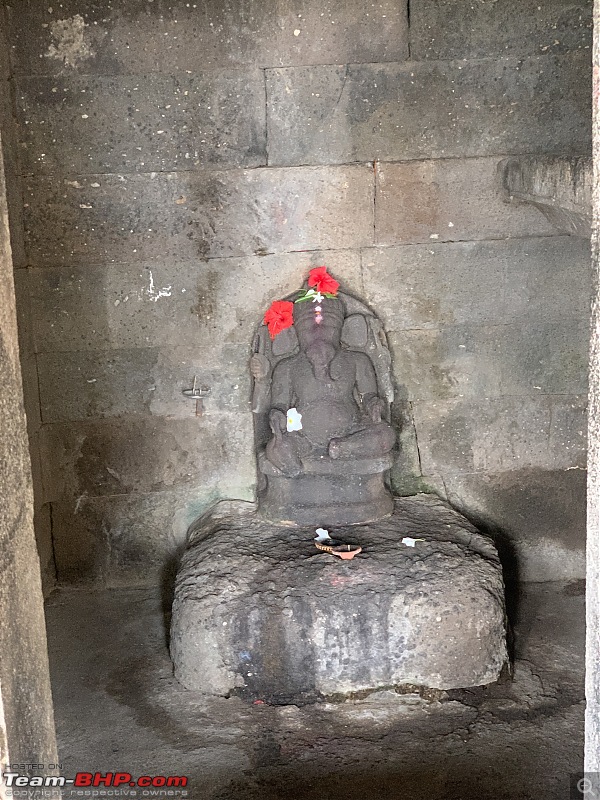 Ganesha in his shrine 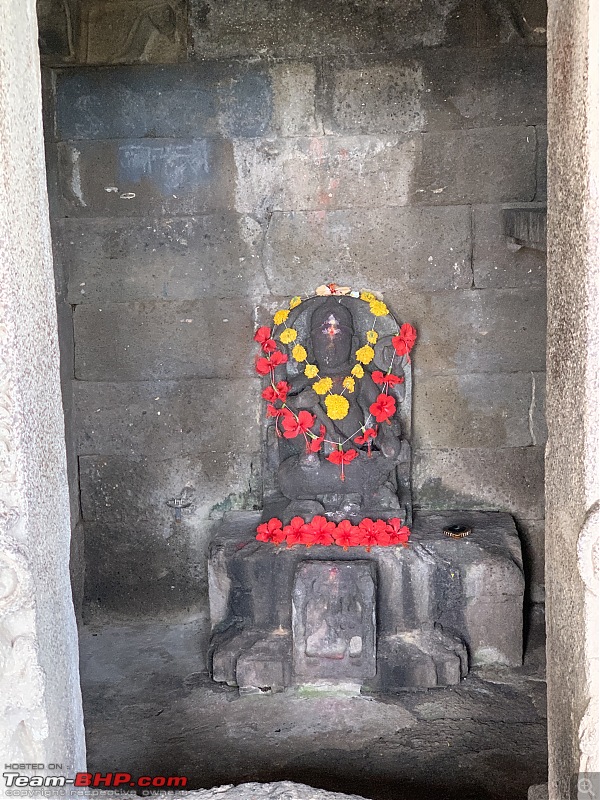 Parvati in her shrine 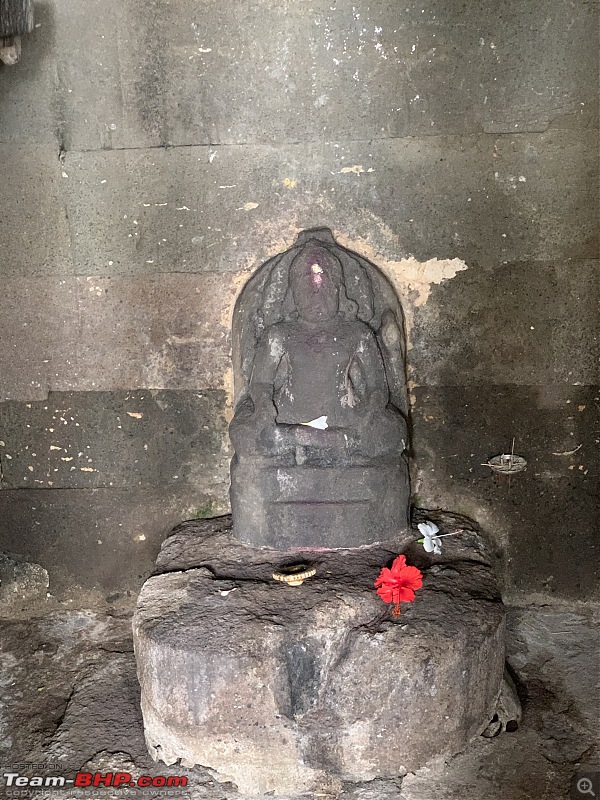 Surya in his shrine 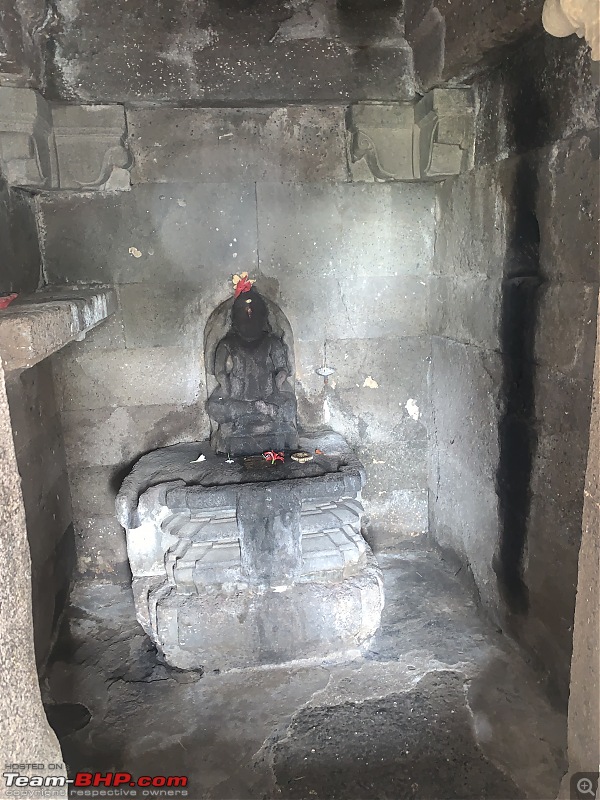 Vishnu in his shrine The main shrine is built in the Bhumija architectural style, which uses the rotating square-circle principle to construct the Shikhara (the tower above the sanctum). There are flat vertical projections on each of the 4 sides, and each quadrant has multiple miniature shrines all the way to the top. The carvings on the temple walls, pillars and ceilings are intricate and beautiful, showing a high degree of mastery of stonework, aesthetics and architectural/geometric principles. We can only imagine how beautiful they must have looked a thousand years ago. Last edited by Mustang Sammy : 20th November 2023 at 22:46. |
| |  (11)
Thanks (11)
Thanks
|
| The following 11 BHPians Thank Mustang Sammy for this useful post: | digitalnirvana, DigitalOne, Dr.AD, GTO, InControl, kiranknair, Pennant1970, rd18, Sangwan, sanjayrozario, vinay5795 |
| |
| | #2 |
| BHPian Join Date: Oct 2020 Location: Poone, Mumbay
Posts: 560
Thanked: 2,285 Times
| Re: Visit to Gondeshwar Temple & Nashik Winery Some more examples of beautiful sculptures   Beautiful illustrations of the female form 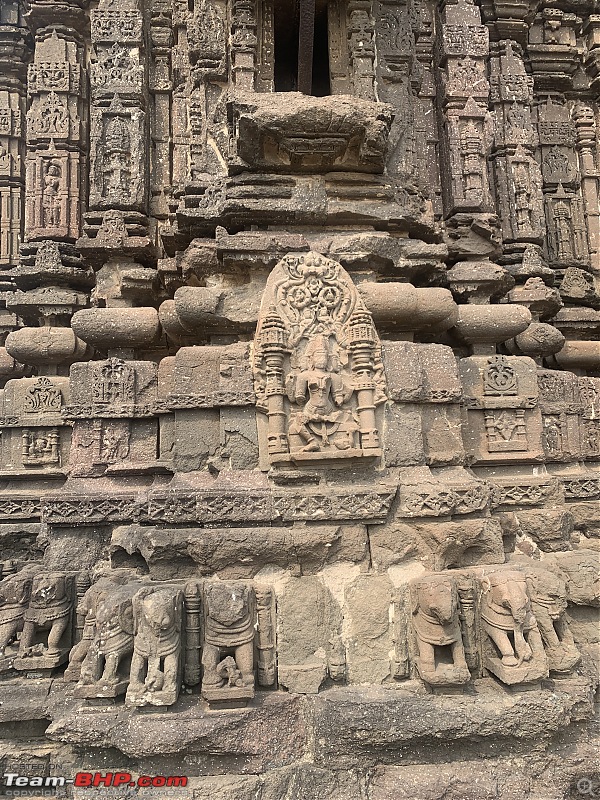 Looks like Nataraja 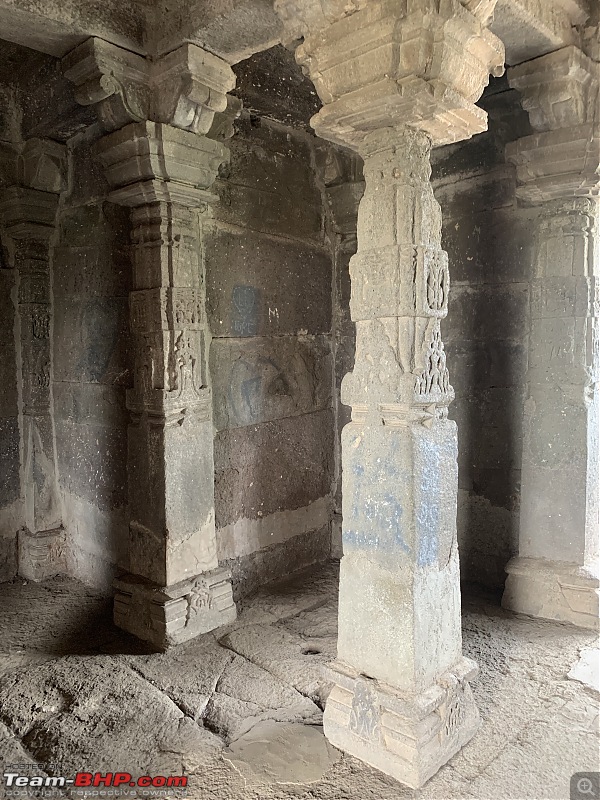  The squirrel could almost be a part of the stonework  Wall of the main shrine  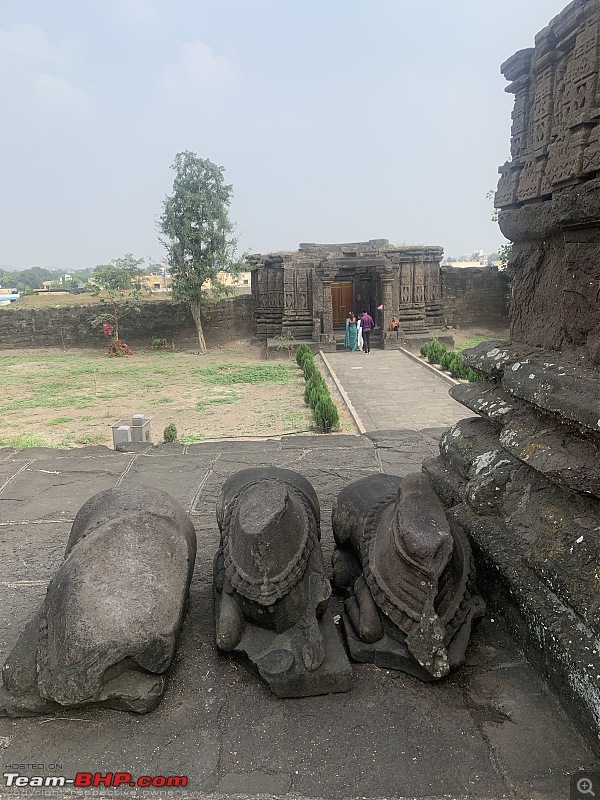 What could have motivated someone to destroy such beauty? Other countries will do 10 times as much publicity for sites that are barely a hundred years old, and will maintain the whole place impeccably. Here we have an almost uncountable bounty of historical treasures handed to us by our ancestors, and we ae letting it all go to seed. After around 90 minutes of walking around and admiring the temple, Shelby and Cobra wanted to move on, as did D & T. All the parents and grandparents had to fall in line with their wishes, so we said our goodbyes to Mahadev, piled into our steeds and headed north towards wine country aka Nashik. Last edited by Mustang Sammy : 20th November 2023 at 22:27. |
| |  (15)
Thanks (15)
Thanks
|
| The following 15 BHPians Thank Mustang Sammy for this useful post: | abhay_D, Briarean, digitalnirvana, DigitalOne, Dr.AD, GKU, GTO, kiranknair, kratswat, Mahesh Prasad, NitNac, Pennant1970, Sangwan, sanjayrozario, thirugata |
| | #3 |
| BHPian Join Date: Oct 2020 Location: Poone, Mumbay
Posts: 560
Thanked: 2,285 Times
| Re: Visit to Gondeshwar Temple & Nashik Winery Nashik: The initial impression of Nashik was quite a favorable one. The parts that we drove through were clean and green with decent roads, reminding me of the Pune of yore. Hopefully the city can retain these pluses as it grows. Two wheelers are unfortunately also infected with the wrongsidedrivingitis virus, which has spread from its home in Pune to many other cities of Maharashtra. The Resort: After around 45 minutes driving through the town, we exited into wine country. After driving past a couple of big name wineries, we arrived at our destination: Regenta Soma Vine Village, located very close to the banks of the dammed up Godavari river (the Gangapur dam). The resort is tastefully done up, with the wine theme pervading all aspects of the place, down to the rooms being named after wine (grapes) like Riesling, Chardonnay etc.. The staff was welcoming, warm and friendly, and were good enough to upgrade us to the pool view rooms. The rooms themselves were spacious and well equipped with (more than the) bare necessities of life. 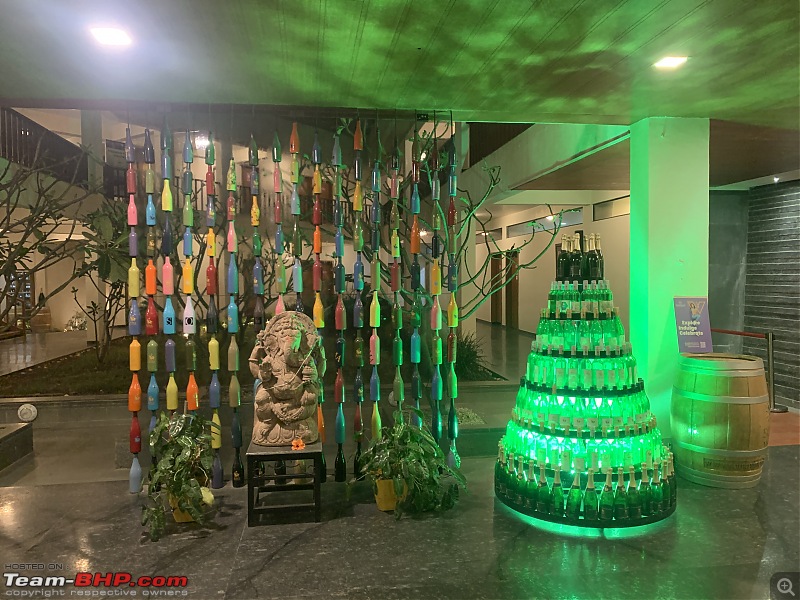 Brightly colored bottles in the lobby 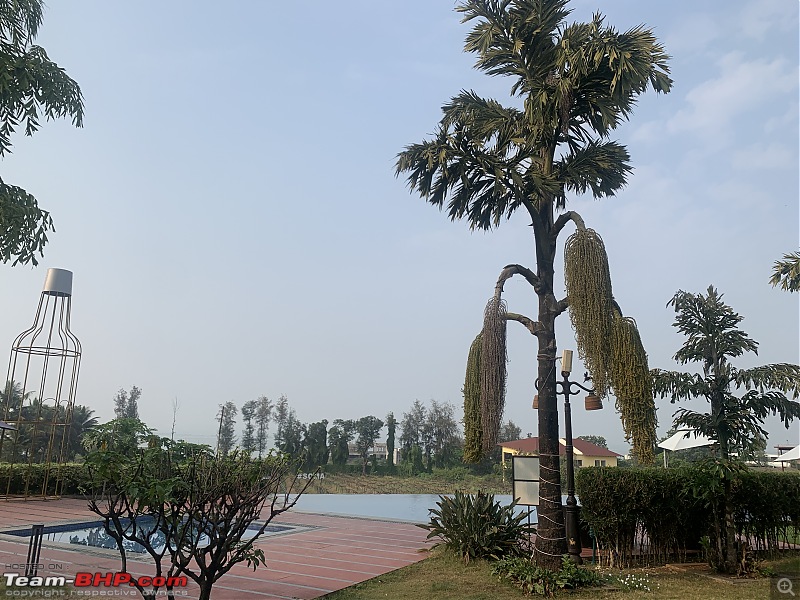 View from Le Room  Le Room  Infinity Pool. We didn't partake of its pleasures, unfortunately 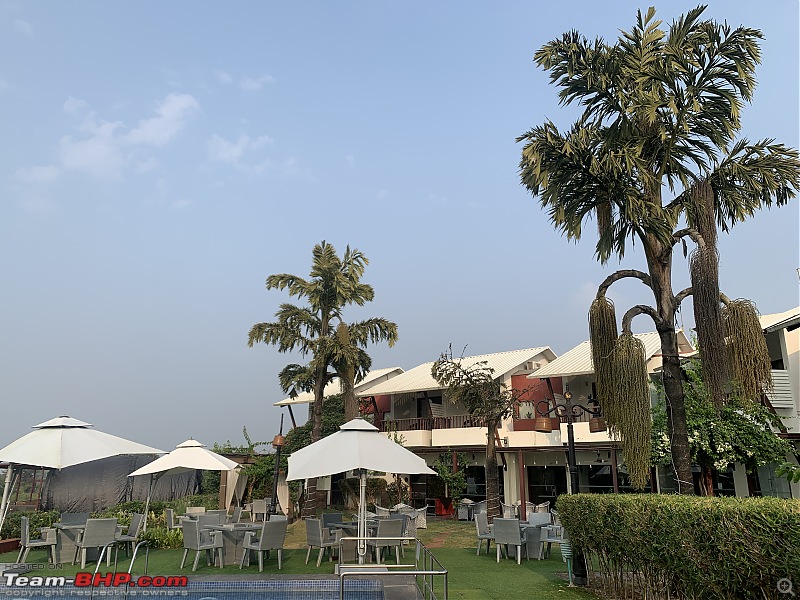 Poolside tables After settling in and a very late lunch, we set out to explore the place a little bit. The wine theme continued, as can be seen from the pictures below. The place looked even cooler in the dark, once the lights came on. The young and older kids all had a good time in the well equipped recreation room, which had a foosball table, Table tennis, Carrom and pool table 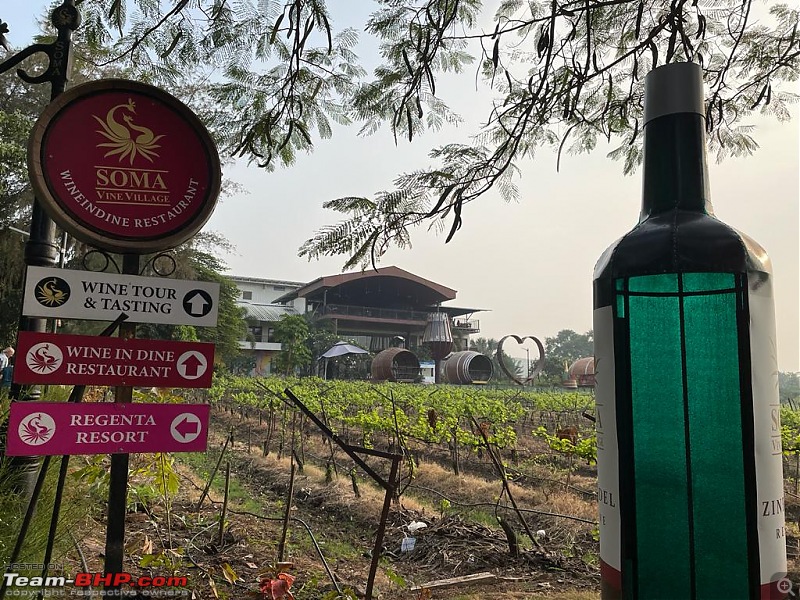 It's going to be one BIG party when this guy is opened 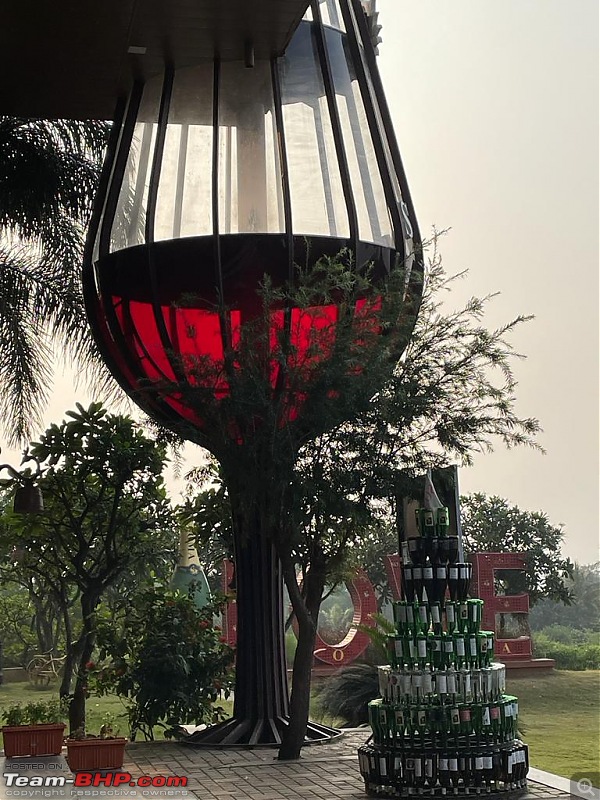 A bit hard to swirl this one  The winery from afar 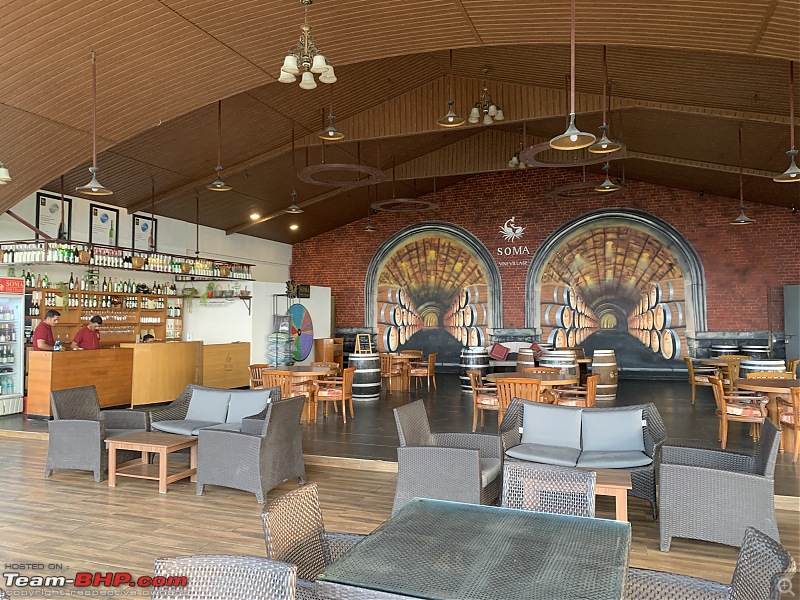 Italian restaurant in the winery 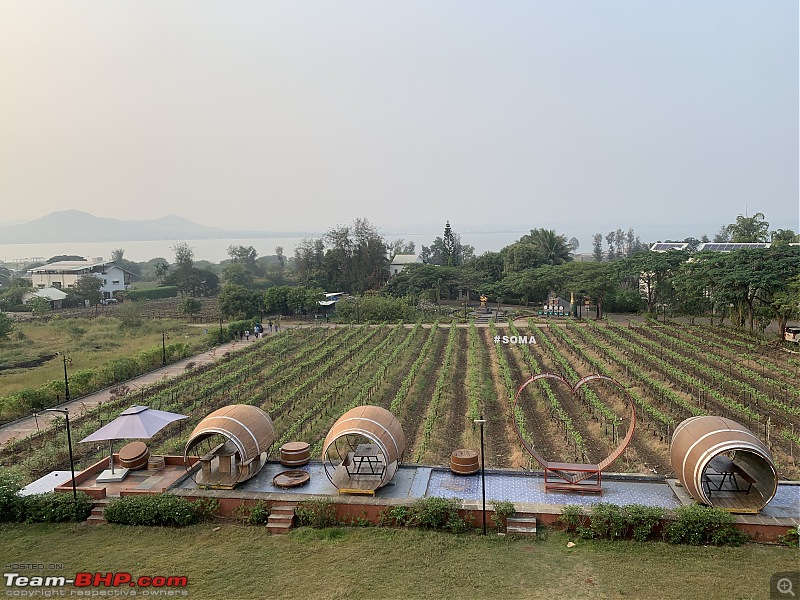 View of one of the vineyards, with seating inside barrels  Lit up at night 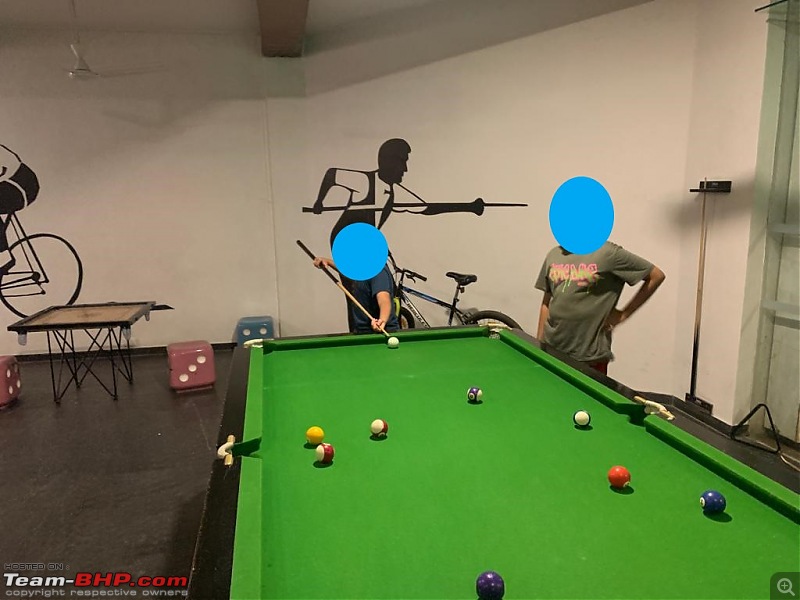 The felt escaped unharmed  Having fun.. Next morning we all woke up early and took a walk down to the lake side, seeing the sunrise and breathing in the (somewhat) clean rural air, mixed with the obligatory smell of burning wood/leaves. A hearty breakfast was followed by a pleasant and informative wine tasting session, where the resident wine expert graciously showed us (and many others) around the wine making area and guided us through a nice wine tasting session. Some of the whites were nice, and there was also a pseudo-wine made from pomegranate for those with an extra long sweet tooth. Shelby, Cobra & I then bicycled around the resort for 30 minutes or so, and I rediscovered muscles that I had long forgotten about. Was great to be back on 2 wheels after many years.  Bottles are for show  These barrels are for the export oriented wines 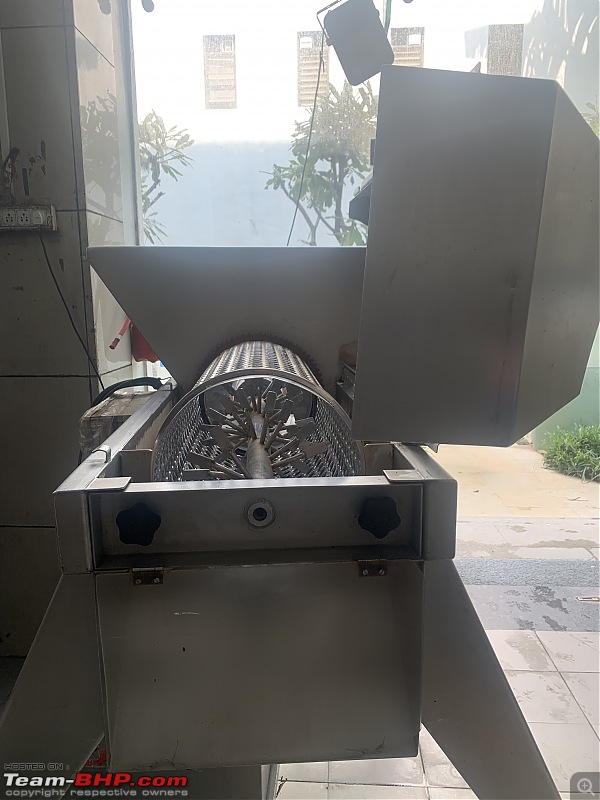 Machine for removing the skin and seeds from grapes  Fermentation tank  Can't wait to start the tasting (only one out of the above 4) A long and lazy lunch later, we departed, and once again the drive was smooth till we entered Pune, and we again had to battle our way through traffic before reaching home. A short and sweet weekend, and both the destinations are highly recommended. Last edited by Mustang Sammy : 22nd November 2023 at 08:48. |
| |  (16)
Thanks (16)
Thanks
|
| The following 16 BHPians Thank Mustang Sammy for this useful post: | Briarean, cartrail, comfortablynumb, digitalnirvana, Dr.AD, ex-innova-guy, GTO, InControl, kiranknair, LONG_TOURER, NitNac, Pennant1970, Rhinox~Cnu, Sangwan, sanjayrozario, thirugata |
| | #4 |
| Team-BHP Support  | Re: Visit to Gondeshwar Temple & Nashik Winery Thread moved out from the Assembly Line. Thanks for sharing! |
| |  (1)
Thanks (1)
Thanks
|
| The following BHPian Thanks Aditya for this useful post: | digitalnirvana |
| | #5 | |
| BHPian Join Date: Jun 2011 Location: Gurgaon
Posts: 754
Thanked: 806 Times
| Re: Visit to Gondeshwar Temple & Nashik Winery Wow! came across this TL and it has the 3 things that I really love - Driving, Ancient Temple, Vineyard  Awesome writeup - and I 100% echo your thoughts! we dont do enough to maintain and promote our heritage and tourism! OH, the magnificence; just waiting to be explored! Quote:
The plan / architecture / details - are EXACTLY SAME. How did this happen? In 11th Century, two temple complexes 1000 KMs apart having exact same layout / architecture / construction a couple of pics below to buttress my point above 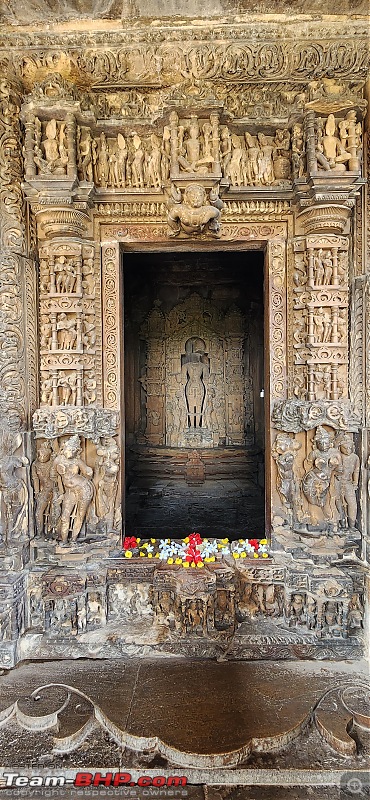  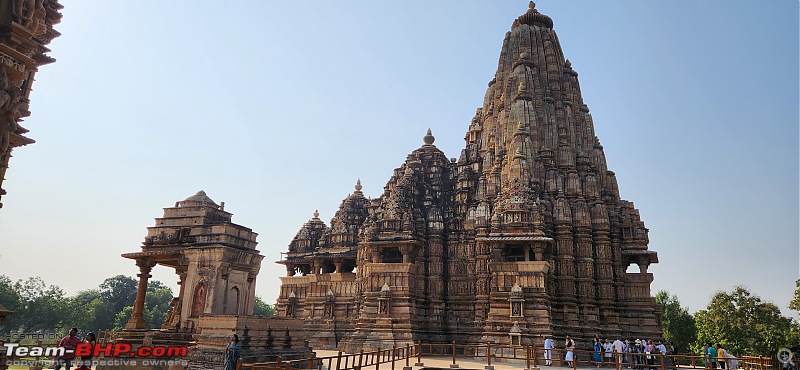 see the similarity?! The mystery is how did this happen? Did they have a central college that taught building temples and had a standard template and all of these builders graduated from there? or was there a travelling groups of builders / architects that went from place to place and took a cookie cutter approach? or were these pre-fabricated in a "factory" kind of setting and transported and assembled by a local band of assemblers? I can think of so many things - all fantastical - none fitting the current narrative of the ancients being backward More and more i want to believe the "Ancient Aliens" kind of series looking at our history, monuments and heritage. Would love to get my hands on any materials explaining this and many more mysteries like this. Does our academia even care for what lies in our literal backyard? P.S:- in case interested, my TL for that trip (still in progress) - https://www.team-bhp.com/forum/trave...s-chambal.html (Hidden Gems Series: The marvels of Chambal!) Last edited by sach.sri : 23rd November 2023 at 13:38. | |
| |  (3)
Thanks (3)
Thanks
|
| The following 3 BHPians Thank sach.sri for this useful post: | Briarean, Mustang Sammy, rd18 |
| | #6 |
| Newbie Join Date: May 2021 Location: BENGALURU
Posts: 13
Thanked: 12 Times
| Re: Visit to Gondeshwar Temple & Nashik Winery What could have motivated someone to destroy such beauty? It is shameful and heartbreaking to see such magnificent monuments that hold value across historical, cultural, religious, architectural perspectives still bear scars from historical wounds. I don't understand why the Indian state cannot do a better job of this despite all its might! |
| |  ()
Thanks ()
Thanks
|
| | #7 |
| BHPian Join Date: Sep 2023 Location: Pune (Poona)
Posts: 51
Thanked: 118 Times
| Re: Visit to Gondeshwar Temple & Nashik Winery I took a similar route recently. Visited the windmill farm along with stay at the tree house, Sula. We concluded the journey with Tirambakeshwar Temple. Here are some of the pictures. |
| |  (1)
Thanks (1)
Thanks
|
| The following BHPian Thanks Tiago_Boy for this useful post: | Mustang Sammy |
 |


